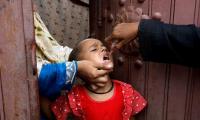A few days ago, a PTI supporter on Twitter asked people to name a single world-class hospital built by the PML-N during its decade of government in Punjab and five years at the federal level.
This is a question asked repeatedly by PTI supporters and is now also echoed by PML-N supporters, who ask how many hospitals etc have been built by the PTI during its seven years in Khyber Pakhtunkhwa and nearly two years at the federal level. This question has taken an added importance during the current coronavirus crisis.
Let me concede at the onset that, although there are many excellent hospitals in Pakistan that provide great healthcare, there is not a single ‘world-class’ hospital in Pakistan, if world-class is taken to mean amongst the world’s best. Let me further say that there is not a single world-class university in Pakistan. Nor a single world-class car manufacturer. Nor a single world-class computer manufacturer. Nor are there world-class manufacturers of mobile phones, televisions, light bulbs, aircrafts, semiconductor chips, boats, medicine, razor blades, etc etc.
Similarly let me also concede that there aren’t many world-class writers, scientists, researchers, economists, computer programmers, athletes, doctors, engineers, etc, in Pakistan.
The reason is that Pakistan is a poor country with correspondingly underdeveloped human resources. We don't even rank in the first hundred countries in the Human Development Index. Our per capita income, at less than $1500 per year, is only around eight percent of the richest countries’ income. When we arent world-class in most anything, why should we expect world-class hospitals? That is not to say that we don’t have islands of excellence here and there. We do. But for the most part, compared to the best in the world, our institutions leave a lot to be desired. The good news, however, is that when our national income increases, most institutions in Pakistan will also improve and become, hopefully, world-class.
The Aga Khan Hospital and University in Karachi provide excellent healthcare and medical education and a number of other institutions in Pakistan do the same. But there aren't too many medical procedures that have been invented in Aga Khan or elsewhere in Pakistan nor a lot of path-breaking research studies done here.
Similarly, LUMS is probably the best in Pakistan but again it falls short of the best in the world. That is not to say that a few individual professors are not at the top of their fields, but the university, as good as it is, falls short of being the best in the world.
That doesn’t say of course that Pakistanis are any less capable than anyone else. It's just that at our level of socio-economic development it's difficult to produce many world beating institutions. But when Pakistan becomes richer and we have many world-class medical colleges producing doctors who stay here, many medical equipment manufacturers who produce state of the art medical equipment here, huge number of well-paid doctors, biologists, pharmacologists, biochemists etc, researching in our universities and private firms, then, and only then, we will have world-class hospitals.
For political point-scoring of course asking for government-built hospitals to be the best in the world is fine. But rationally, asking for world-class hospitals is like asking for a rose to grow in a desert. That is not going to happen. You would need to change the ecology and the environment of the desert, add water and fertilisers, etc, and spend years before roses bloom in the desert. Similarly, Pakistan has to have many years of high national income growth, and corresponding investments in human resources and institutions, before building the world's best hospitals, universities, car manufacturers, toothpaste manufacturers, etc.
A better question to ask would be: since health is a provincial subject, how much did the PML-N do to improve healthcare in the ten years it governed in Punjab. It turns out it did quite a lot. For instance, it revamped hospitals in all 25 district headquarters, including providing all missing facilities and outfitting each one of them with a new ICU having four beds with ventilators.
In addition, eight hospitals were set up at tehsil headquarter level complete with an ICU of two beds with ventilators. In addition, 117 other health facilities at the tehsil level were also refurbished. Finally, more than 2600 Basic Health Units were also either built or rebuilt and revamped.
The PML-N also built the Pakistan Kidney and Liver Institute and Research Centre Lahore, Children’s Complex Hospital Multan, Children’s Hospital Faisalabad, Recep Tayyip Erdogan Hospital Muzaffargarh, Rawalpindi Institute of Cardiology, Multan Institute of Kidney Disease, Modern Burn Centre in Nishtar Hospital Multan, Surgical Tower in Mayo Hospital Lahore, etc etc. It also built drug testing laboratories in four cities.
More importantly, the PML-N government in Punjab under Shehbaz Sharif also hired on merit doctors, nurses, pharmacists, and other medical personnel to staff all the facilities. The government also divided healthcare in two parts, preventive care and curative care, to ensure that disease prevention can be given priority.
Special control programmes were set up to prevent the spread of hepatitis, AIDS, dengue, tuberculosis, etc. Specific filter clinics were made for hepatitis patients and they were given free medicines for six months. In fact, patients were even sent medicines through courier service so they didn’t have to return to the clinic again and again.
A central medicine buying mechanism was instituted so that all medicines were bought from prequalified Pakistani and multinational companies and these were then sent to all district and tehsil hospitals and basic health units. This resulted in transparency in the procurement process but also ensured that quality medicines were available and given free to the patients.
Patient records were computerised, and there was even a programme that sent ambulances to take pregnant women to the appropriate hospitals to deliver babies. A computerised Patient Transfer system was instituted so that when a patient was transferred from say a tehsil hospital to the bigger district hospital, the district hospital was forewarned that a patient was coming and it should prepare a bed for him. His/her medical record was already in the district hospital’s computer due to computerisation of records.
Thus in spite of resource constraints, Punjab during the PML-N’s ten years made significant improvement in healthcare infrastructure and delivery. Since health is a provincial subject, not much could be done by the federal government directly, but even so the PML-N at the federal level launched a health insurance programme in Islamabad and took this programme to many districts around the country. It was planned that over the subsequent five years this insurance would be made available to the whole of Pakistan.
Although the PML-N is not very popular in other provinces, it is quite popular in places where it has had a chance to govern and serve: Gilgit-Baltistan, Azad Jammu and Kashmir, and Punjab. Poll after poll shows that the PML-N would sweep Punjab in an election. The reason for that is simple. It worked hard to meet the expectations of the people. The great work done by Shehbaz Sharif in Punjab in healthcare is one reason those expectations were met.
The writer has served as federal minister for finance, revenue and economic affairs.
Twitter: @MiftahIsmail
MPAs ask for their salaries and benefits to be at par with high court judges and exempt from tax
This system fosters and places premium on VIPs, facilitating VIP culture, which is alive and kicking
Imagine this waste covering over 15,500 cricket stadiums, piled three meters deep every year
If there is one thing that can be gleaned from politics today, it is that we no longer speak same language
Postman argues that “typographic mind” was yielding to “televisual mind”
Pakistan is well poised to meet opportunities that Artificial Intelligence will offer for developments in industries







